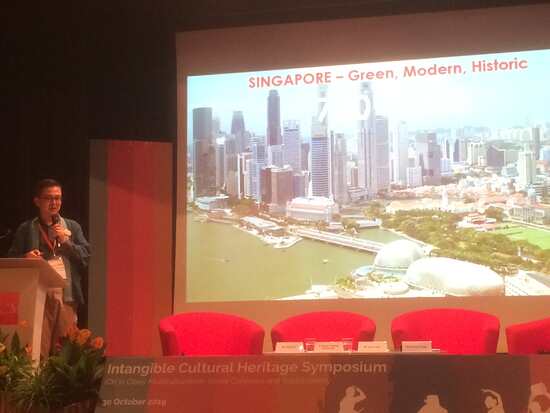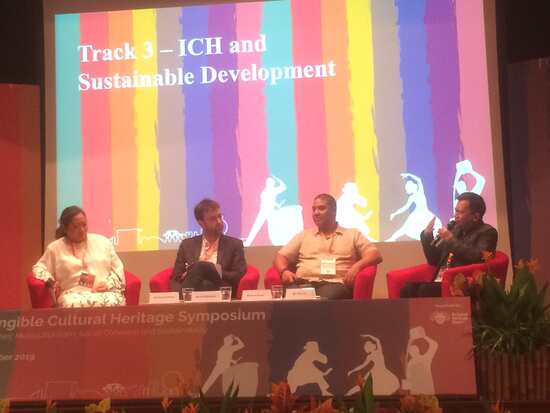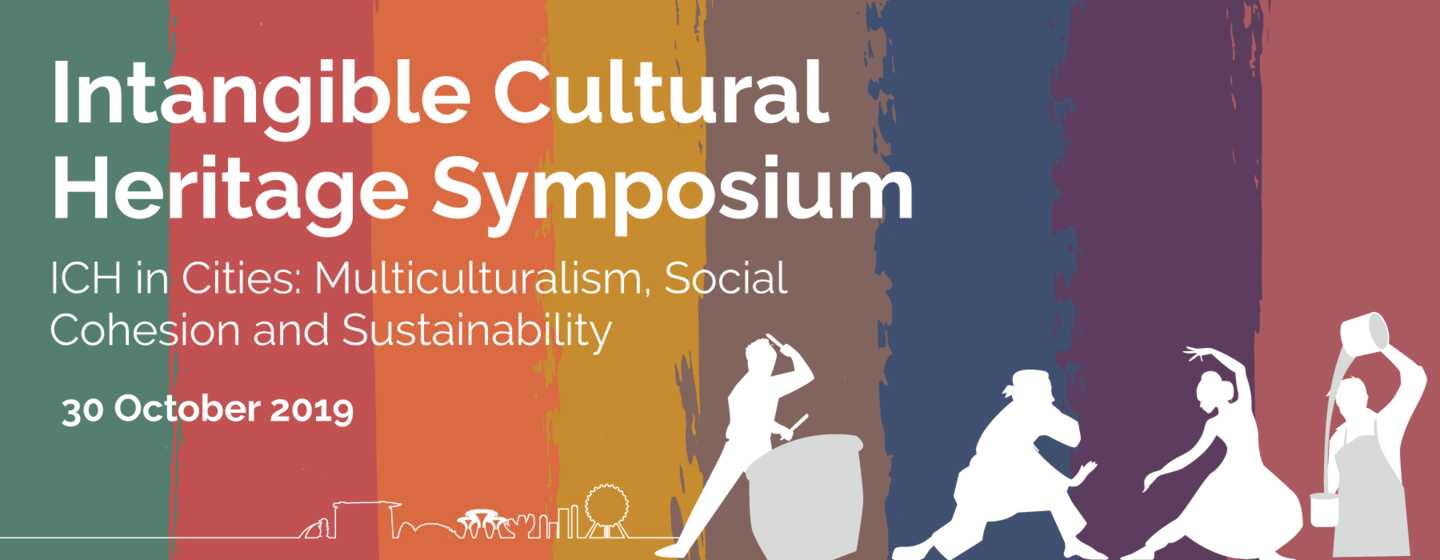On 30 October 2019, the room of the Asian Civilizations Museum was filled with just under two hundred participants. For Singapore, a city-state with more than five million inhabitants, the topic at hand is therefore of vital importance. Singapore is a city that has to deal with a scarcity of available space, and wants to do so in a sustainable way, that is, with care for the environment. As a country with only 720 square kilometres of land, Singapore is a dense urban centre where most people live and work in high rise buildings. Singapore is also a multicultural city, which houses many ethnicities with just as many religions that seem to live peacefully next to each other. The major ethnic groups are the Chinese, Malays and Indians due to the migration trends in the 19th and 20th centuries, reflected by the historic districts of Little India, Kampong Gelam (associated with the Malays and Muslims) and Chinatown. Today, the Chinese are the largest population group in Singapore. But Singapore also houses people of many faiths, including Christians, Jews, Buddhists, Taoists, Muslims, Hindus, Sikhs, and many others. For example, the Christian denominations include Methodists, Anglicans, Catholics and Armenians (one of the oldest Christian populations in Singapore, which has had its own church building since 1835). No country in the world is as religiously diverse as Singapore.
Against this background, a variety of international and local speakers were invited to reflect on the future of the super diverse city, with experts not only from Singapore, but also Australia, Thailand, Burkina Faso, Jamaica, France, Italy and the Netherlands. The event was also graced by keynote speakers from UNESCO's Bangkok Office as well as ICHCAP, the UNESCO Category 2 centre based in the Republic of Korea. Due to global migration movements, all of these countries have become culturally diverse. It presents challenges socio-economically, but also with regard to social cohesion.
Kelvin Ang is in charge of Urban Redevelopment in Singapore
New Urban Agenda
A few years ago UNESCO put the subject high on its agenda in its New Urban Agenda. Ms. Duong Bich Hanh, head of the UNESCO office in Bangkok, elaborated on this. According to her, when migrating to the cities many places disappear where intangible cultural heritage is traditionally practiced. In the city, intangible cultural heritage is given a different, less obvious context. In this new context, many young people find intangible cultural heritage old-fashioned.
Her introduction was supported by examples from other lecturers. For example, David Brown spoke about the Maroon culture in Jamaica, traditionally situated in the mountains, where these free-spirited Jamaicans fled to escape slavery. Nowadays this population group lives more and more in the cities and has even migrated to faraway countries. The Netherlands also has a Maroon community from the Caribbean.
The diversity of the French cuisine
Loïc Bienassis, from France, dealt with the example of French cuisine, since a few years on the international UNESCO list. The French have difficulty with multiculturalism: figures about different ethnic backgrounds are not kept, since everyone with the French nationality is considered French. But in the meantime, couscous has become the favorite dish of all French people. In that sense, there is also an increased diversity in France.
David Brown and Loïc Bienassis participated in the track on Sustainable Development
Hybridity
In the session in which Centre for Intangible Cultural Heritage employee Albert van der Zeijden participated, the word "hybridization" was used regularly. If all cities in the world become culturally diverse, won't they look alike, and will everything become a great mix of cultures? Van der Zeijden dealt with the example of Little India in The Hague, focusing on the role of small entrepreneurs in the Paul Krugerlaan, the large shopping street in Transvaal with its many different stores. From Lebanese restaurants to shops where you can buy bridal wear if you are looking for a traditional Hindu wedding suit. Interestingly, you can also buy traditional Muslim clothing. For the people who want ‘a bit of everything’, there is the "fusion" section. It seems to support the notion that we are heading for a mix of all kinds of cultures.
A new dialogue
The large conurbations can make people alienate from their roots, that is at least supposed. You can also look at it differently and see intangible cultural heritage as an opportunity. Many scholars would say that intangiblecultural heritage offers opportunities to connect with your own roots and to enter into dialogue with others. It is one of the reasons that intangible cultural heritage has been given a central place in Singapore's heritage planning policies. Of course there is a lot of new construction in Singapore. But there is also the realization that people want to feel at home where they live, and intangible cultural heritage plays a role in this. ‘Feeling at home’ means that you want to be able to share cultural expressions with people from many different backgrounds. This poses challenges, says UNESCO, but also provides starting points for a renewed dialogue within and between communities. We live in exciting times!
The symposium "ICH in Cities: Multiculturalism, Social Cohesion and Sustainability" was organized by the National Heritage Board in Singapore. The lectures will be published as a soft publication, a PDF that can also be downloaded on this website.
